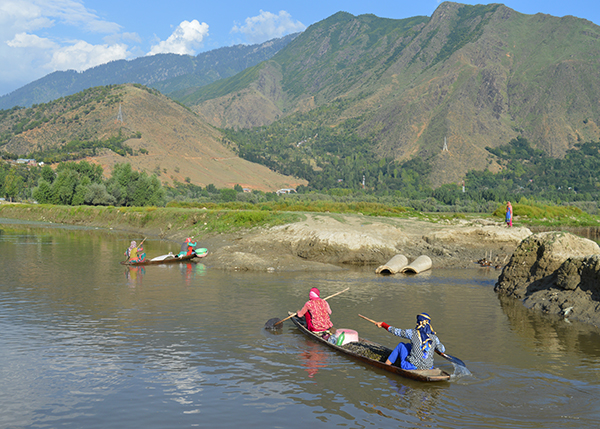INDIA, ASIA
Lake Wular
Lake Wular is one of the large freshwater lakes in India and lies in the Kashmir Valley, 40 km northwest of Srinagar City in the Northwest of India at a height of 1.600m. With an area of 189 km², Wular Lake is also one of the largest freshwater lakes in Southern Asia. Extensive marshes surround the lake and give space for important natural wildlife. The rivers Bohnar, Madamati and Erin from the mountain ranges and the rivers Vetasta (Jhelum) and the Ningal from the south bring hundreds of tons of silt into the lake every year.
What makes it special
Lake Wular plays a significant role in the hydrographic system of the Kashmir Valley by acting as huge absorption basin for annual floodwater.
Protection status
· Ramsar Sites 461 and 2496 , Wetlands of International Importance
· Wildlife Conservation Reserve - Hygam Wetland Reserve

Biodiversity
Wular Lake is a significant wintering site for a number of migratory waterfowl species such as Little Egret, Cattle Egret, Shoveler, Common Pochard, and Mallard. Birds like Marbled Teal and Pallas’s Fish-eagle are species listed in the Red List of IUCN. Many terrestrial bird species observed around the lake include Short-toed Eagle, Little Cuckoo, European Hoopoe, Monal Pheasant, and Himalayan Pied Woodpecker. Wular Lake is also an important habitat for fish and contributes about 60 percent of the fish yield of the Kashmir Valley. The dominant fish species found in the lake are: Cyprinus carpio, Barbus conchonius, Gambusia affinis, Nemacheilus sp., Crossocheilus latius, Schizothorax curvifrons, S. esocinus, S. planifrons, S. micropogon, S. longipinus and S. niger.

Local Communities
More than 8.000 fisher folks earn their livelihood from Wular Lake.
Threats
The pollution from fertilizers and animals as well as human wastes, the conversion of vast catchment into agriculture land and the hunting pressure on waterfowl and migratory birds are the biggest problems in the region.

